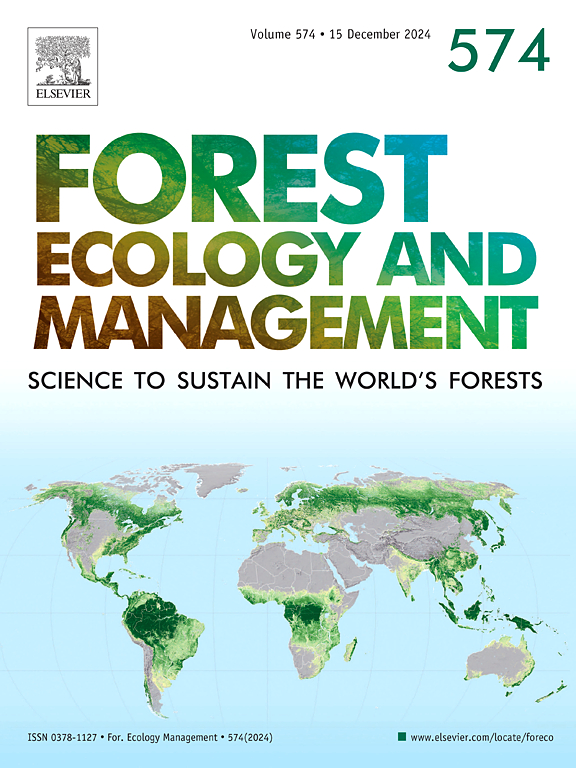National-scale calibrated GEDI AGBD models for effective assessment of growth conditions across forest strata
IF 3.7
2区 农林科学
Q1 FORESTRY
引用次数: 0
Abstract
Forests play a critical role in global carbon storage, biodiversity conservation, and climate change mitigation. Japan, with 67 % of its land area covered by forests, is one of the world's most forested nations. NASA’s Global Ecosystem Dynamics Investigation (GEDI) mission has widely been demonstrated to accurately estimate aboveground biomass density (AGBD). GEDI relative height metrics (RHs), derived from vertical energy distributions, serve as key predictors for AGBD estimation while capturing the variability in the vertical structure of the observed area. This study collected widely distributed co-located airborne laser scanning and field measurement data across Japan. Using the GEDI simulator, noise-free simulated GEDI waveform data were generated to train the AGBD models for different forest strata, including canopy-level AGBD and total AGBD, as well as for various forest types, including needleleaf, broadleaf, and their combinations. All GEDI L2A data collected between 2019 and 2023 were processed and aggregated to generate a nationwide map of AGBD for Japanese forests at a spatial resolution of 0.01° (approximately 1.1 km in latitude and 0.90 km in longitude at Tokyo). The results showed strong agreement with Japan's 4th National Forest Inventory (NFI), with national-scale AGBD estimates averaging 195.81 Mg/ha, compared to 197.66 Mg/ha from the NFI. This consistency was also evident across different forest types: for needleleaf forests, our estimate of 213.02 Mg/ha closely matched the NFI value of 216.21 Mg/ha, while for broadleaf forests, our estimate of 185.43 Mg/ha was in close agreement with the NFI estimate of 180.31 Mg/ha. The mean canopy-level AGBD and under-canopy AGBD were estimated at 150.11 Mg/ha and 45.70 Mg/ha, respectively, with under-canopy AGBD accounting for 25.33 % of the total AGBD. Our results demonstrate that GEDI can accurately capture AGBD across different forest strata, emphasizing the potential of GEDI RHs for estimating vertical forest structures. This study underscores the importance of quantifying forest carbon stocks, which is critical for biodiversity conservation and sustainable forest management.
求助全文
约1分钟内获得全文
求助全文
来源期刊

Forest Ecology and Management
农林科学-林学
CiteScore
7.50
自引率
10.80%
发文量
665
审稿时长
39 days
期刊介绍:
Forest Ecology and Management publishes scientific articles linking forest ecology with forest management, focusing on the application of biological, ecological and social knowledge to the management and conservation of plantations and natural forests. The scope of the journal includes all forest ecosystems of the world.
A peer-review process ensures the quality and international interest of the manuscripts accepted for publication. The journal encourages communication between scientists in disparate fields who share a common interest in ecology and forest management, bridging the gap between research workers and forest managers.
We encourage submission of papers that will have the strongest interest and value to the Journal''s international readership. Some key features of papers with strong interest include:
1. Clear connections between the ecology and management of forests;
2. Novel ideas or approaches to important challenges in forest ecology and management;
3. Studies that address a population of interest beyond the scale of single research sites, Three key points in the design of forest experiments, Forest Ecology and Management 255 (2008) 2022-2023);
4. Review Articles on timely, important topics. Authors are welcome to contact one of the editors to discuss the suitability of a potential review manuscript.
The Journal encourages proposals for special issues examining important areas of forest ecology and management. Potential guest editors should contact any of the Editors to begin discussions about topics, potential papers, and other details.
 求助内容:
求助内容: 应助结果提醒方式:
应助结果提醒方式:


